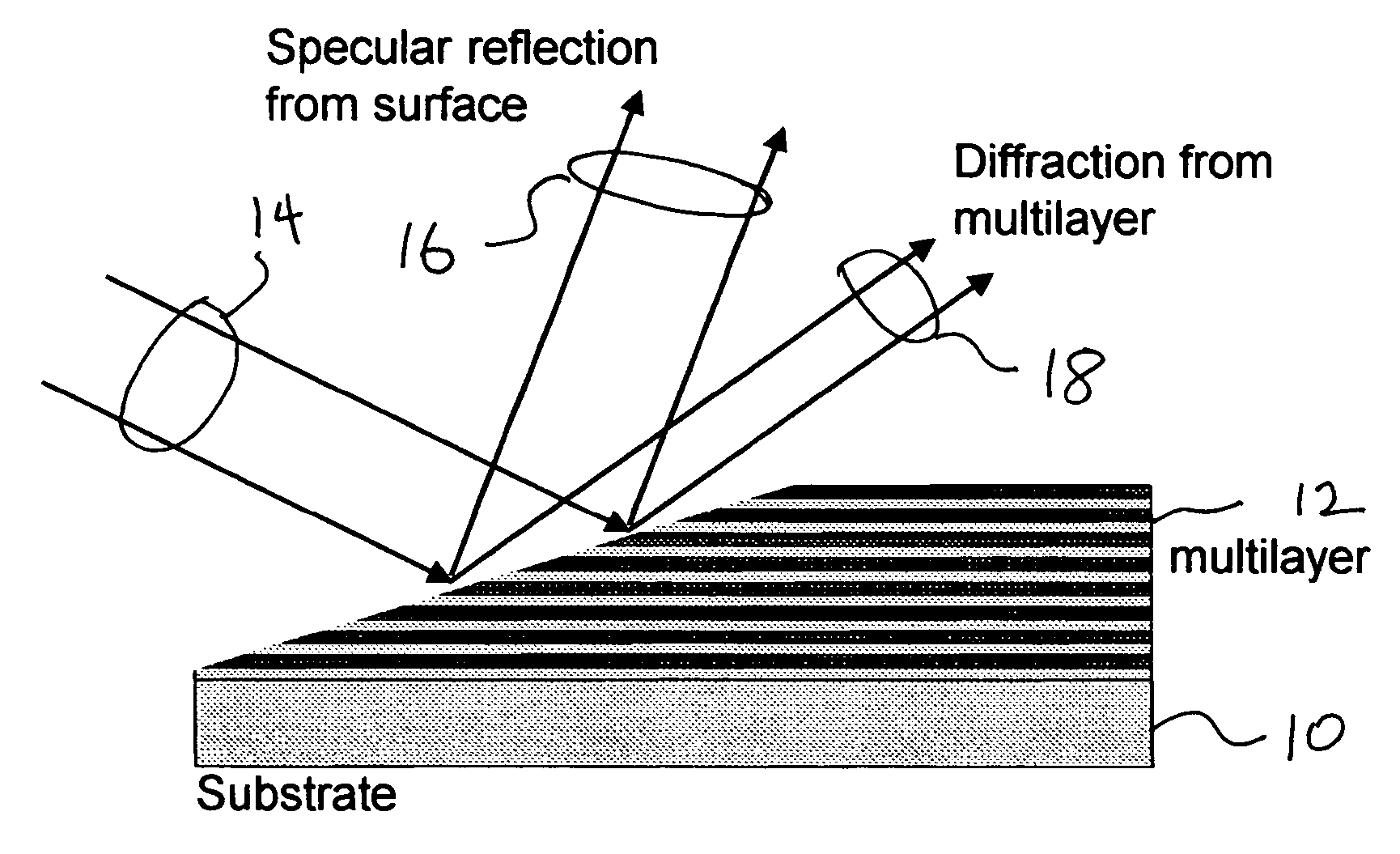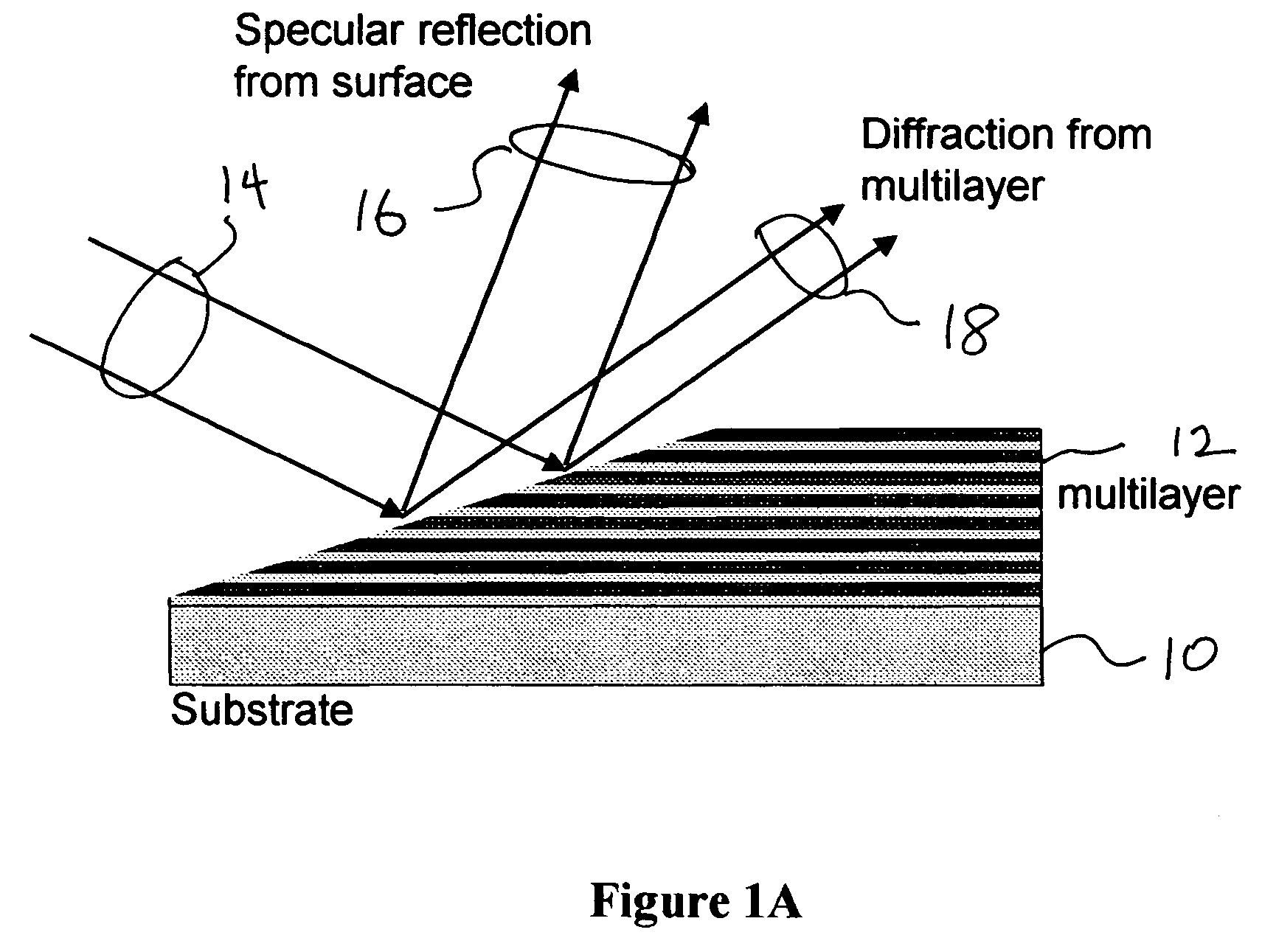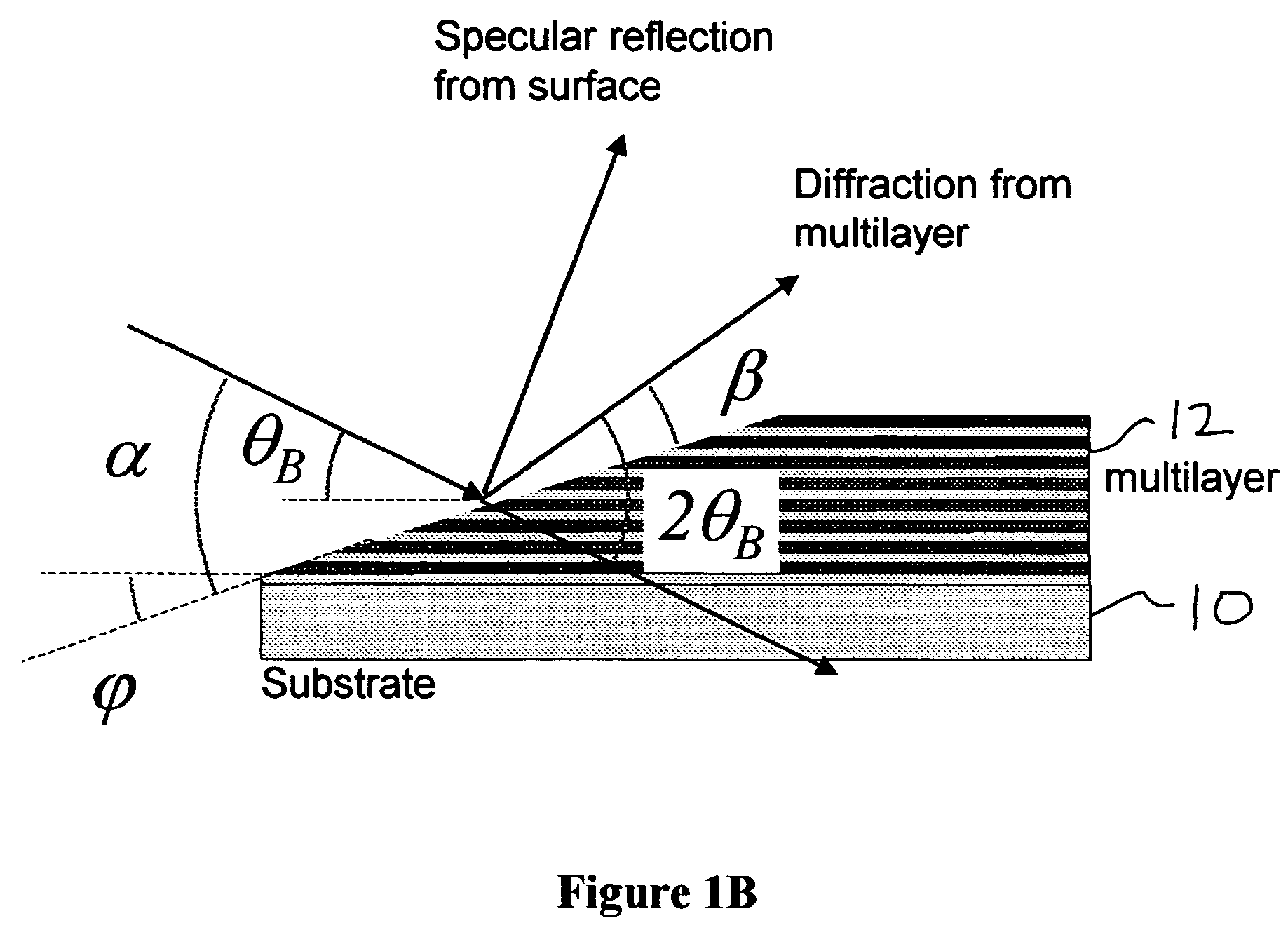High-efficiency spectral purity filter for EUV lithography
a spectral purity filter and ultraviolet light technology, applied in the field of extreme ultraviolet light lithography (euvl) systems, can solve the problems of difficult and expensive manufacture, less efficiency, and the need for re-optimization of the optical system, and achieve the effect of simple and inexpensive, high efficiency
- Summary
- Abstract
- Description
- Claims
- Application Information
AI Technical Summary
Benefits of technology
Problems solved by technology
Method used
Image
Examples
Embodiment Construction
[0022] The invention provides an asymmetric-cut multilayer to diffract EUV light with the same properties as a perfect blazed grating. A highly efficient diffractive spectral purity filter, and a simple and inexpensive way to manufacture the filter onto a multilayer-coated optical element are described. The optical surface need not be tilted or redesigned. Cutting or polishing a multilayer coating at an angle relative to the surface gives rise to a volume diffraction grating that acts as a blazed grating with a blaze angle equal to the cut angle. In the case of the asymmetric-cut multilayer (also known as a sliced multilayer [V. E. Levashov and A. V. Vinogradov, Appl. Opt 32, 1130, 1993]), the condition for maximum multilayer reflection (the Bragg condition) is equivalent to the on-blaze condition. Only light that Bragg-diffracts from the multilayer structure (a volume effect that relies on interaction of the light with many layers in the structure) will be reflected. This light is ...
PUM
 Login to View More
Login to View More Abstract
Description
Claims
Application Information
 Login to View More
Login to View More - R&D
- Intellectual Property
- Life Sciences
- Materials
- Tech Scout
- Unparalleled Data Quality
- Higher Quality Content
- 60% Fewer Hallucinations
Browse by: Latest US Patents, China's latest patents, Technical Efficacy Thesaurus, Application Domain, Technology Topic, Popular Technical Reports.
© 2025 PatSnap. All rights reserved.Legal|Privacy policy|Modern Slavery Act Transparency Statement|Sitemap|About US| Contact US: help@patsnap.com



